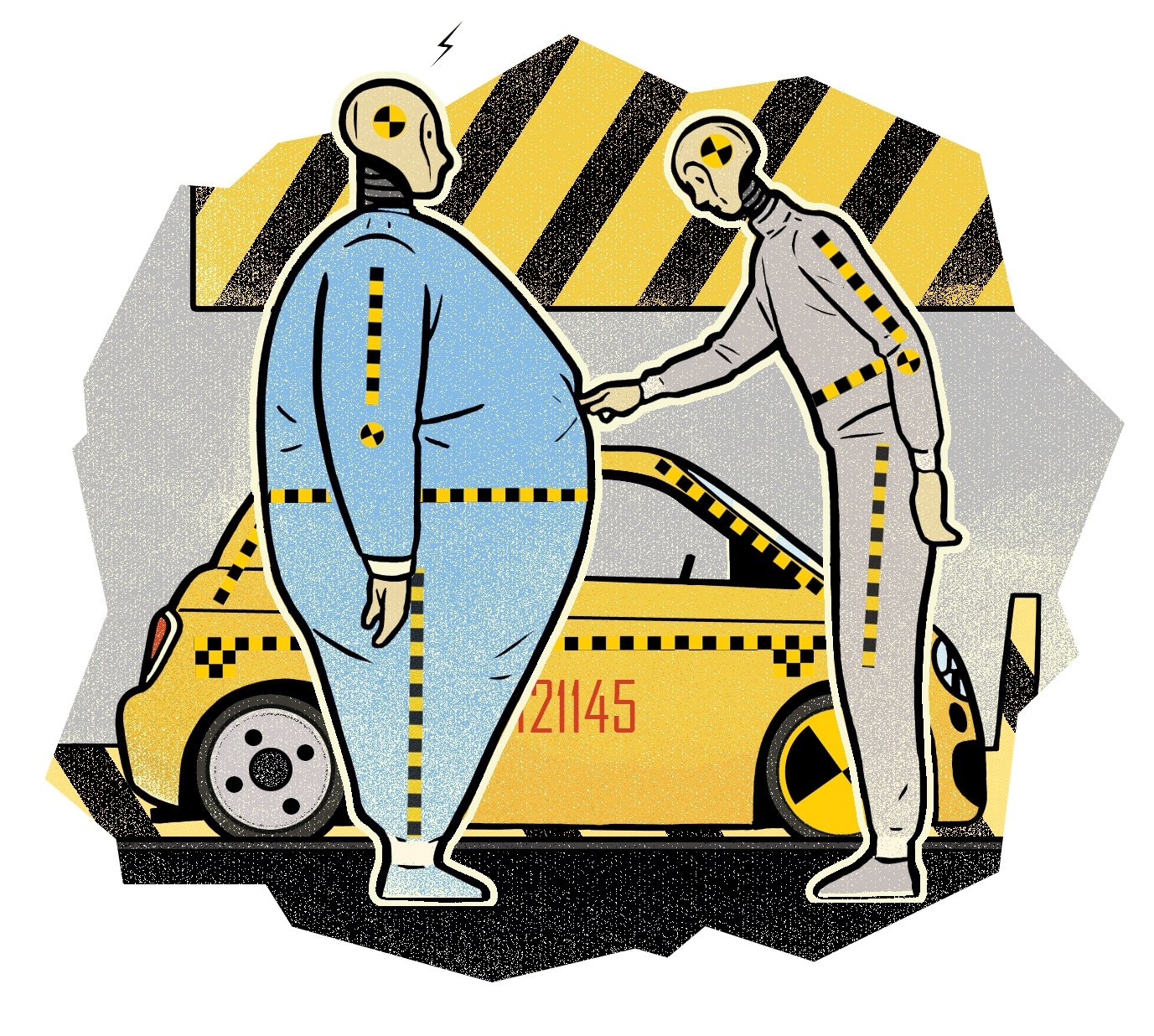

Fat can indeed act as a shock absorber in violent collisions. A 2003 study of car-crash victims found that those with more subcutaneous fat were less likely to suffer abdominal injuries. But the fat-as-airbag principle only goes so far. When a driver is flung forward, the heavier his or her body, the greater the force required to stop it.
“Changing demographics create challenges to seat-belt fit,” says Richard Kent of the University of Virginia Center for Applied Biomechanics. Restraints have long been designed using crash-test dummies, whose size—about 168 lbs. and 5’7” tall—doesn’t correspond to most Americans today. (Though one of the world’s leading dummy producers recently announced plans to release an obese, 271-lb. model.)
The pelvis is the primary load-bearing structure for seat-belt safety, Kent says. But with big stomachs, seat belts slide up and off the lap. Since a restraint works best once it engages with the skeleton, any time it spends pressing into soft tissue will delay that protective effect.
To observe this, Kent defrosted eight cadavers and belted them into car seats for a 30mph crash. High-speed video showed that the obese bodies flew off their seats pelvis- and lower-chest-first. Smaller subjects’ hips stayed in place as their heads and torsos pitched against the upper harness. That may help explain the pattern of injuries typically seen in obese crash victims—more damage to the legs, less to the head, and a greater likelihood of death.
This article was originally published in the February 2015 issue of Popular Science, under the title “Can body fat protect you like a built-in cushion?”.
Have a question? Tweet your science questions and quandaries to @PopSci with the hashtag #AskAnything, or email us at AskAnything@popsci.com.
